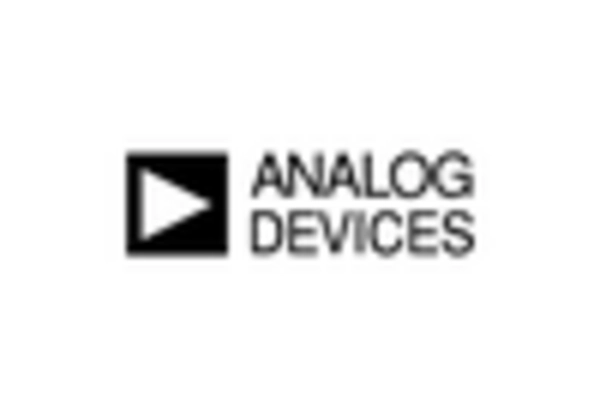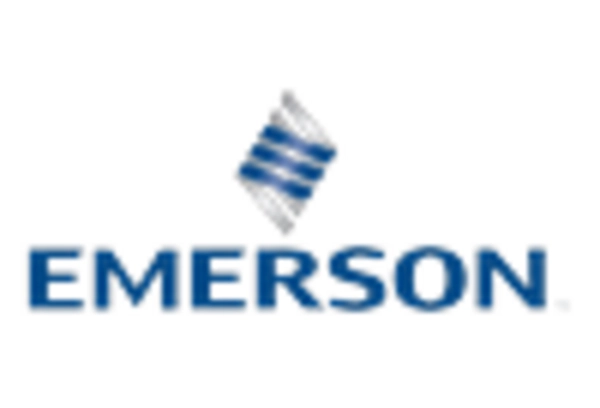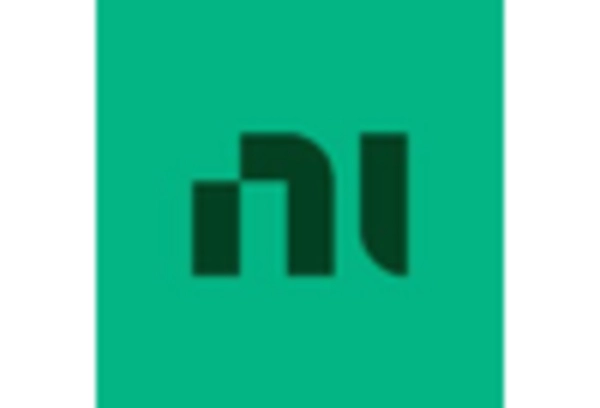Emergence of IoT Applications
The current transducer market is witnessing a transformative shift due to the emergence of Internet of Things (IoT) applications. As industries increasingly adopt IoT technologies, the need for accurate current measurement becomes critical for data-driven decision-making. Current transducers are integral to IoT systems, enabling real-time monitoring of electrical parameters across various applications, including smart homes and industrial settings. The IoT market in the US is projected to reach $1 trillion by 2026, indicating substantial growth potential. This expansion is likely to drive the demand for current transducers that can seamlessly integrate with IoT platforms, providing essential data for analytics and optimization. As businesses leverage IoT solutions to enhance operational efficiency, the current transducer market is expected to experience significant growth, driven by the increasing reliance on connected devices.
Growth in Electric Vehicle Adoption
The current transducer market is poised for growth due to the increasing adoption of electric vehicles (EVs) in the US. As the automotive industry shifts towards electrification, the demand for efficient power management systems becomes critical. Current transducers play a vital role in monitoring battery performance and energy consumption in EVs. The US EV market is projected to grow at a CAGR of over 20% through 2030, driven by consumer demand and government incentives. This rapid expansion presents a significant opportunity for the current transducer market, as manufacturers seek to develop products that meet the specific requirements of EV applications. The integration of current transducers in EVs not only enhances performance but also contributes to the overall efficiency of electric power systems, thereby supporting the broader transition to sustainable transportation.
Rising Demand for Energy Efficiency
The current transducer market is experiencing a notable surge in demand for energy-efficient solutions. As industries strive to reduce operational costs and enhance sustainability, the need for precise current measurement becomes paramount. This trend is particularly evident in sectors such as manufacturing and renewable energy, where accurate monitoring of electrical consumption is essential. According to recent data, the energy efficiency market in the US is projected to grow at a CAGR of approximately 8% through 2027. This growth is likely to drive the adoption of advanced current transducers, which facilitate better energy management and optimization. Consequently, the current transducer market is positioned to benefit significantly from this increasing focus on energy efficiency, as businesses seek to implement technologies that not only comply with regulations but also contribute to long-term cost savings.
Advancements in Smart Grid Technology
The integration of smart grid technology is transforming the current transducer market. As the US transitions towards more intelligent energy distribution systems, the demand for sophisticated current transducers is expected to rise. Smart grids require real-time data for effective monitoring and management of electrical systems, which current transducers can provide. The market for smart grid technology is anticipated to reach $100 billion by 2026, indicating a robust growth trajectory. This shift towards smart grids necessitates the use of advanced current transducers that can handle high data volumes and provide accurate measurements. As utilities and energy providers invest in smart grid infrastructure, the current transducer market is likely to see increased opportunities for innovation and product development, catering to the evolving needs of the energy sector.
Increased Focus on Industrial Automation
The current transducer market is benefiting from the rising trend of industrial automation across various sectors. As manufacturers seek to enhance productivity and reduce downtime, the implementation of automated systems becomes increasingly prevalent. Current transducers are essential components in these systems, providing accurate current measurements that facilitate real-time monitoring and control. The industrial automation market in the US is expected to grow significantly, with estimates suggesting a CAGR of around 10% through 2028. This growth is likely to drive demand for current transducers, as industries require reliable and precise measurement tools to optimize their automated processes. Consequently, the current transducer market is positioned to capitalize on this trend, offering innovative solutions that align with the needs of modern manufacturing environments.

















Leave a Comment